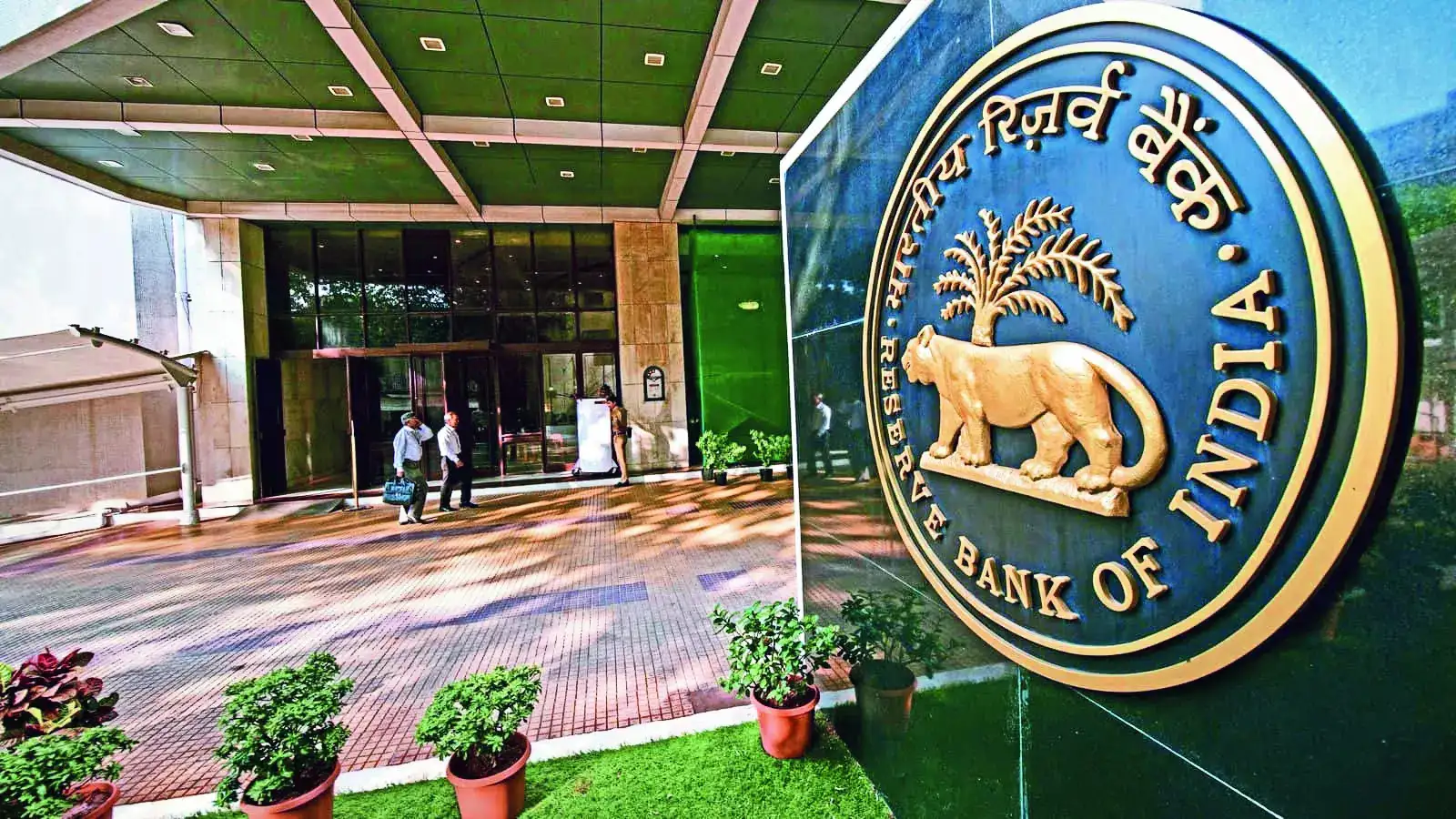Top Trending Acquisitions & Mergers News & Highlights


This Diwali, OOH ad sales increase by 20%, while data-driven campaigns increase DOOH share by 24%.
This year's Diwali brilliance extended beyond diyas and fireworks, illuminating billboards, computer screens, and Indian cityscapes. Brands transformed the outdoors into a canvas of color, emotion, and commerce by painting the streets with joyous tales in both Tier-II communities and busy metropolises. The outcome? For the Out-of-Home (OOH) advertising sector in India, this was one of the busiest holiday seasons to date. Due to early holiday planning, daring creative executions, and a swift transition to digital and data-led outdoor solutions, the industry saw impressive double-digit growth as consumer sentiment skyrocketed and advertiser confidence returned in full force.The OOH sector has grown significantly over this holiday season, which is indicative of both the restored vigor in consumer markets and economic optimism. Vaishal Dalal, co-founder of Excellent Publicity, emphasized this momentum and noted that the industry's growth trajectory is still strong. This holiday season, the OOH sector has experienced strong double-digit growth. OOH advertising revenues increased steadily across the country, from ₹4,140 crore in 2023 to ₹4,650 crore in 2024, and are expected to surpass ₹5,200 crore in 2025. The entire OOH ad expenditure increased by more than 15–20% year over year during Diwali, thanks to robust seasonal campaigns in industries including retail, FMCG, consumer durables, automotive, and BFSI."Internal estimates indicate a ~40% YoY increase in Diwali-related OOH bookings at Excellent Publicity, surpassing the industry average," he added. Early festive planning, strong advertiser confidence, and nearly full occupancy across premium billboard sites were credited with this spike.Vikas Nowal, CEO of Interspace Communications, echoed this pattern, stating that the company also experienced a notable Christmas bump. Our OOH company has performed well throughout the Diwali holiday season this year, with a projected 20% increase in sales over the previous year. Higher consumer involvement and greater advertising confidence throughout the festival period are reflected in this uptick," he continued. With companies aiming for both quantifiable engagement and widespread effect, both leaders concur that the OOH medium has become one of the most dependable and prominent options for festive storytelling.
Published 21 Oct 2025 07:55 PM


To improve hybrid cloud services, CCI approves Capgemini's complete acquisition of Singapore-based Cloud4C.
In order to strengthen its hybrid cloud and AI-driven enterprise products, the French IT giant, which has a sizable delivery base in India, had announced the deal in August.The request by French IT services giant Capgemini to fully purchase Singapore-based Cloud4C was accepted by the Competition Commission of India (CCI) on Tuesday.The move followed Capgemini's announcement in August of this year that it had inked a deal to buy Cloud4C, a pioneer in hybrid cloud platform services.According to an announcement from CCI, the proposed combination is related to Capgemini SE's purchase of all shares of Cloud4C Services Pte Ltd (Target 1) and Cloud4C Services Pvt Ltd (Target 2). The Capgemini group's ultimate parent company is Capgemini SE. In a post on X, the regulator stated, "Commission approves proposed acquisition of Cloud4C Services Pte Ltd and Cloud4C Services Pvt Ltd by Capgemini SE."Capgemini, a prominent multinational in consulting, digital transformation, technology, and engineering services, has its headquarters in Paris. One of the company's biggest delivery bases worldwide is India, where it is well-represented.
Published 15 Oct 2025 05:23 PM


Why the largest automakers in the world are reconsidering their
The electric vehicle (EV) boom is slowing down globally. As governmental changes, costs, and consumer reluctance redefine the industry's future, major automakers are reducing their production and adopting hybrids after years of bold all-electric commitments.Although growth will be uneven, EVs will account for one in four worldwide auto sales this year, according to BloombergNEF's annual Electric Vehicle Outlook report. With more than half of all new automobiles sold in China being electric, the U.S. and Europe are facing declining demand and political unpredictability. In the meantime, reasonably priced EVs are driving historic growth in emerging economies like Vietnam and Thailand.Automakers are shifting their tactics to include hybrids and plug-in hybrids after previously promising entirely electric lines. A reconsideration is being compelled by declining sales, exorbitant battery prices, and inadequate infrastructure for charging. 1. A slower rate of consumer acceptance Mass-market consumers are still wary about EVs, despite early adopters' enthusiastic embrace. Enthusiasm has been tempered by range concern, expensive upfront costs, and uneven charging infrastructure, particularly in nations with weak charging networks or growing electricity bills. 2. Expensive batteries and a lack of materials The price of lithium, nickel, and cobalt—essential components of EV batteries—has fluctuated. Profit margins have been squeezed by this unpredictability, which has also reduced the financial appeal of EV production. Costs are still high when compared to internal combustion engine (ICE) and hybrid vehicles, even with the emergence of local battery plants. 3. Gaps in charging infrastructure The charging network is still sporadic outside of China and several regions of Europe. Long charging durations and a lack of fast-charging stations continue to deter consumers in the US and India. Automakers are concerned about generating EVs more quickly than the infrastructure can handle.
Published 14 Oct 2025 09:20 PM


SBI looks to focus on deal financing within its own territory, as a draft regulation from the RBI proposes an even playing field for Indian banks
The State Bank of India (SBI), which has long funded the overseas acquisitions of Indian companies, believes it is prepared to support domestic mergers and acquisitions (M&As) as the Reserve Bank of India (RBI) looks into the possibility of allowing domestic lenders to do so.“Our outbound M&A financing involves Indian corporations acquiring foreign entities. Banks such as SBI possess extensive knowledge of acquisition financing,” C.S. Setty, chairman of the largest lender in the country, informed reporters during the Global Fintech Fest in Mumbai on Wednesday.Amitabh Chaudhry, the managing director and CEO of Axis Bank, stated on Tuesday that his bank aims not only to take part but also to challenge foreign banks that have been funding these acquisitions for several years, offering them “a run for their money.”On 1 October, in the course of detailing its review of monetary policy, the RBI unveiled a draft framework aimed at allowing domestic banks to underwrite acquisition financing for Indian corporates—something that has been desired by the banking sector for a long time. Regulatory constraints had effectively prohibited Indian banks from providing loans for share purchases in acquisition deals up to this point. Foreign banks, non-bank financial institutions, bond markets, and private equity largely took on those tasks.As the RBI aims to revise the regulations, domestic banks might soon benefit from a level playing field that is conditioned on safeguards, credit limits, and oversight standards. Market participants think this action could reveal value in the corporate funding life cycle. “Im Zuge des Geschäftsjahres 2024 beliefen sich die Werte von M&A-Transaktionen auf mehr als 120 Milliarden US-Dollar (ungefähr ₹10 lakh crore bzw. trillion). As per a note from SBI Research Ecowrap following the RBI's announcement regarding draft rules, if we consider that the debt component accounts for 40% of M&A and that banks could finance 30% of this, it results in a possible credit growth of ₹1.2 lakh crore.
Published 09 Oct 2025 04:27 PM


Acquisitions & Mergers
Acquisitions & Mergers are the latest trend in the globe.


Acquisitions still on the radar, says Suven Executive Chairman
Acquisitions continue to be on the radar for Suven Pharmaceuticals, that has just announced its proposed merger with Cohance Lifesciences. The private equity-driven company is scouting for technologies and companies to add to its strengths as a CDMO (contract development and manufacturing organisation), Annaswamy Vaidheesh, Suven Executive Chairman, told businessline. It is a global business with international clientele and the company continues to look for technologies, in India or overseas, he said. Suven Pharmaceuticals and Cohance Lifesciences had announced, late on Thursday, a proposed scheme of amalgamation to merge both companies – a transaction that is expected to be sealed in 12-15 months. Once complete, private equity firm Advent would own about 66.7 per cent and the rest being with public shareholders. In fact, Advent International had (in December 2022) agreed to acquire a 50.1 per cent stake in Suven Pharmaceuticals from the Jasti family for ₹6,313 crore — one of the largest pharma deals in recent years. This was Advent’s fourth. In November 2022, Cohance Lifesciences (wholly-owned by Advent) was formed by bringing together three Advent portfolio companies — RA Chem Pharma, ZCL Chemicals and Avra Laboratories. While regulatory and shareholder approvals are awaited, Vaidheesh said he did not expect rationalising of the multiple manufacturing facilities between the different companies. Each production site has its particular role to play, and is mapped to international customers, he explained. On the research front though, he said the research and development sites will see consolidation into one site at Genome Valley. And common functions like Finance and Human Resources could also be “leveraged”, he said, indicating some reorganisation. The combined entity will have 12 manufacturing facliities, including Suven’s five and Cohance’s seven. The final entity would have five research centres, including a single facility from Suven. While Suven’s revenues for the year ended March 2023 stood at ₹1,340 crore, the merged entity is pegged at ₹2,677 crore. On the company’s final employee strength, he said, it was too soon to comment, on any change in workforce as the merger process takes time and needed to be analysed. The combined entity will, once approved, will have three growth engines — pharma CDMO, speciality chemicals CDMO, and APIs (active pharmaceutical ingredients). Cohance shareholders will be issued 11 equity shares of Suven for every 295 equity shares held in Cohance.


Uday Shankar to be VC of merged Reliance-Disney media business: Report
Former Walt Disney executive Uday Shankar will be named as vice chairman of the board following a merger between the India media assets of Reliance Industries and Disney, two sources familiar with the matter told Reuters.Reliance and Disney are expected to make a formal announcement on Wednesday after signing a binding pact. Shankar is set to take a stake of around 9% in the new merged entity, Reuters reported in February. Reliance and Disney each have a streaming service and 120 television channels between them and the deal is expected to strengthen Reliance's hold over India's $28 billion media and entertainment market.Reuters on Tuesday reported that the new entity is likely to have Nita Ambani, wife of Indian billionaire Mukesh Ambani, as chair of the board.


Reliance, Disney sign $8.5 bn deal to form JV, to merge media ops in India
India's top conglomerate Reliance Industries and Walt Disney on Wednesday announced the merger of their India TV and streaming media assets, creating an $8.5 billion entertainment juggernaut far ahead of rivals in the world's most populous nation.Reliance, led by Asia's richest man Mukesh Ambani, will inject $1.4 billion in the merged entity, with the company and its affiliates holding a more than 63% stake. Disney will hold about 37%, the companies said in a joint statement. For Disney, the merger follows its long-drawn struggle to arrest a user exodus from its bleeding India streaming business and financial strain caused by billions of dollars in Indian cricket rights payments, in another example how foreign businesses can struggle to grow in India. The merger values the India business of the US entertainment giant at just around a quarter of the $15 billion valuation when Disney acquired it as part of its Fox deal in 2019, sources have said. The companies said the transaction values the merged venture at around $8.5 billion on a post-money basis. They did not explain how they arrived at such valuation. Together, the Reliance-Disney merged entity will have 120 TV channels and two streaming platforms, helping Ambani eclipse rivals such as Japan's Sony, India's Zee Entertainment and Netflix in the country's $28 billion media and entertainment sector. Reliance said Nita Ambani, wife of Reliance boss Mukesh Ambani, would chair the board of the combined entity, and former top Disney executive Uday Shankar would serve as vice chair. "The JV will be one of the leading TV and digital streaming platforms for entertainment and sports content in India, bringing together iconic media assets across entertainment," the companies said in a joint statement. The deal comes when Disney is facing pressure globally to streamline its businesses. Bob Iger returned as Disney chief executive in November 2022, less than a year after he retired, and has since restructured the company to make the business more cost effective.


Advertisement rates may see correction following Disney-Reliance merger
While the Disney-Reliance merger will rejig ad rates, experts are unsure if this is necessarily a bad thing. Advertisers are worried that the merged-co would rack up ad rates indiscriminately, especially as they wield a monopoly in live sports and linear programming. However, others argue that this is necessary course correction as far as pricing is concerned. Especially as the current ad rates are deemed too low to recover content costs for broadcasters and streaming firms. Right after the merger was announced, a report by UBS predicted that ad rates will rise by 20-25 per cent across the board. “Bargaining power of the broadcasters (now fewer and larger) would increase at the cost of the advertisers. There would also likely be some rationalization in content costs as well, leading to industry-level margin improvement,” analysts at UBS said in a note. Reacting to the merger, international advertising firm dentsu emphasised the need for 2-3 strong players in the media market to keep ad rates in check. “For the advertising and marketing sector, this presents a dual prospect of opportunities and challenges. On the positive side, it unlocks fresh possibilities for crafting and deploying innovative and compelling campaigns across an extensive and diverse portfolio of channels and platforms, providing us with extensive reach. However, it also heightens competition and enhances the negotiating power of the newly merged entity, enabling it to exert greater control over pricing and inventory. I hope that in the coming years, the merger achieves a balanced outcome. It’s crucial to maintain two or three major players in the market to foster a healthy and competitive environment, which ultimately should serve the end consumer,” Harsha Razdan, CEO, South Asia, dentsu, explained. On the streaming front, a Disney-Reliance merged co might not necessarily wield a definitive monopoly, as Netflix and Amazon Prime will be able to hold their own against the merged entity. But the same cannot be said about live sports and linear programming according to Santosh N, Managing Partner at D&P Advisory. “Ad rates will certainly go up for sports and linear TV, but that might not necessarily be a bad thing. Moreover, Disney-Reliance cannot increase the rates indiscriminately, especially because advertisers will simply opt out, given that they have many alternative mediums for advertising.” “The coming together of Reliance and Disney will create a very large and dominant player on the supply side. But we conveniently forget that the demand side has always had a very large and dominant Group M with a 50%+ market share. So a strong media entity will now balance the scales. Interesting times ahead!,” Sandeep Goyal, Chairman, Rediffusion, said.


Uday Shankar to be VC of merged Reliance-Disney media business: Report
Former Walt Disney executive Uday Shankar will be named as vice chairman of the board following a merger between the India media assets of Reliance Industries and Disney, two sources familiar with the matter told Reuters.Reliance and Disney are expected to make a formal announcement on Wednesday after signing a binding pact. Shankar is set to take a stake of around 9% in the new merged entity, Reuters reported in February. Reliance and Disney each have a streaming service and 120 television channels between them and the deal is expected to strengthen Reliance's hold over India's $28 billion media and entertainment market. Reuters on Tuesday reported that the new entity is likely to have Nita Ambani, wife of Indian billionaire Mukesh Ambani, as chair of the board.


Reliance, Disney sign $8.5 bn deal to form JV, to merge media ops in India
India's top conglomerate Reliance Industries and Walt Disney on Wednesday announced the merger of their India TV and streaming media assets, creating an $8.5 billion entertainment juggernaut far ahead of rivals in the world's most populous nation.Reliance, led by Asia's richest man Mukesh Ambani, will inject $1.4 billion in the merged entity, with the company and its affiliates holding a more than 63% stake. Disney will hold about 37%, the companies said in a joint statement. For Disney, the merger follows its long-drawn struggle to arrest a user exodus from its bleeding India streaming business and financial strain caused by billions of dollars in Indian cricket rights payments, in another example how foreign businesses can struggle to grow in India. The merger values the India business of the US entertainment giant at just around a quarter of the $15 billion valuation when Disney acquired it as part of its Fox deal in 2019, sources have said.The companies said the transaction values the merged venture at around $8.5 billion on a post-money basis. They did not explain how they arrived at such valuation. Together, the Reliance-Disney merged entity will have 120 TV channels and two streaming platforms, helping Ambani eclipse rivals such as Japan's Sony, India's Zee Entertainment and Netflix in the country's $28 billion media and entertainment sector. Reliance said Nita Ambani, wife of Reliance boss Mukesh Ambani, would chair the board of the combined entity, and former top Disney executive Uday Shankar would serve as vice chair. "The JV will be one of the leading TV and digital streaming platforms for entertainment and sports content in India, bringing together iconic media assets across entertainment," the companies said in a joint statement. The deal comes when Disney is facing pressure globally to streamline its businesses. Bob Iger returned as Disney chief executive in November 2022, less than a year after he retired, and has since restructured the company to make the business more cost effective.


NCLT approves Hinduja Group’s resolution plan for Reliance Capital takeover
National Company Law Tribunal has approved IndusInd International Holdings’ resolution proposal for the acquisition of Reliance Capital. The Hinduja Group company has been given 90 days to implement the resolution, subject to regulatory and other approvals.“The RBI and SEBI approvals are expected to come by next week or so but the IRDAI application is in the process of being filed and might take some time,” sources told businessline. The NCLT application was made by RCap administrator Nageswara Rao Y, who took charge of the company in November 2021 when RBI superseded the erstwhile board of directors and initiated insolvency proceedings against the company. The CoC was constituted in December 2021 and met a total of 49 times starting January 2022, before the final proposal was submitted to the NCLT for its approval. “The resolution plan provides for the implementation of the terms thereof within a period of 90 days from the approval of the Resolution Plan by the Adjudicating Authority and receipt of certified copy of the order approving the Resolution Plan,” the NCLT notice said, adding that the 90-day timeline may be extended if required. IndusInd International has submitted a proposal that includes upfront cash payment of ₹9,650 crore, accounting for 37.03 per cent of the initial amount claimed. The company has also proposed an amount net of ₹50 crore for the benefit of the CoC, which will be part of the upfront cash and an additional Rs 11 crore over and above the proposed amount. On successful completion of the resolution plan, the Hinduja Group will acquire majority shares in Reliance Capital and the company will cease to be listed on stock exchange. Existing shareholding of the company will be cancelled and new shares will be issued to the companies nominated by Hinduja Group. The proposed acquisition is now awaiting the approval of the RBI for Reliance Capital and Reliance Asset Reconstruction, Company Limited, IRDAI for Reliance General Insurance and Reliance Nippon Life Insurance, CCI for the takeover, and SEBI for Reliance Securities and other entities. The deal is also subject to sale of shares of Reliance Home Finance held by Reliance Capital in the open market on various dates.


AIUBEA’s General Secretary N Shankar
The merger of public sector banks signals the initial step towards privatization and potentially leads to its acquisition by foreign entities, according to N Shankar, the general secretary of the All India Union Bank Employees Association.Criticizing the lack of clarity in Parliament regarding the rationale behind these mergers, he said the amalgamation of public sector banks is driven by clear political agendas. While labour unions are actively protesting against further mergers, the central government appears inclined to pursue its policies of merger, especially in the lead-up to the Lok Sabha elections, he said. Shankar was speaking at the inauguration of the 37th state conference of the Union Bank of India Employees Union in Kochi.The state conference gains significance as it is the first to be held post the merger of Union, Andhra, and Corporation Banks. C Ananthakrishnan, President of the Union Bank Employees Union (Kerala), presided over the conference. The conference’s delegate session highlighted the staffing challenges faced by bank branches across the country and criticized management’s reluctance to appoint sub-staff/part-time sweepers, despite government directives. B Ramprakash, general secretary, All Kerala Bank Employees Federation, inaugurated the session.Additionally, the escalating issue of non-performing assets, reaching ₹4.28 lakh crore, drew condemnation, with the delegate session accusing the central government of inaction. Amidst these challenges, the conference celebrated Union Bank of India’s achievement in surpassing its business target of ₹19 trillion and called for collective employee cooperation to achieve the ambitious goal of ₹21.5 trillion business by the end of the first quarter in March 2024.


Railways plans to take over debt-ridden RINL’s forged wheel plant
New Delhi, Feb 24 The Railways has emerged as the likely front-runner for takeover of the Rae Bareli forged wheel unit of Rashtriya Ispat Nigam Ltd (RINL), officials involved in discussions told businessline. While the Railways has agreed “in-principle” to take over the unit and ramp-up capacities, discussions are on regarding the “consideration” for such a “transfer”. The proposal is likely to be placed for Cabinet approval “soon”, officials across the two ministries said. There could be an outright purchase, or an outsourcing agreement (payment made depending on production basis), or “any other form of agreement, details of which are being finalised”. RINL’s forged wheel plant at Uttar Pradesh has already seen an investment of over Rs 2,250 crore. The plant has an installed capacity of 80,000 forged wheels annually, and was commissioned in 2021. Although initial orders for around 2,000 wheels was delivered in FY23, “the plant is unable to operate at full capacity for several reasons” it was noted at internal meetings across ministries. It was also held that the company does not have the requisite expertise to ensure profitability of operations there. The Railways internal projections state that it can take up production of 40,000 units in the first phase, and by 60,000 in phase two, with the excess stock being exported in future. A turnaround of the unit is also projected in the next few years. “It is a high-cost plant simply because the forged wheel unit is unable to produce more than 10,000 units annually (on a run-rate basis). But, as numbers increase, there will be economies of scale. Some investments could also happen in the coming days,” an official said. While piecemeal disinvestment of the forged wheel unit is expected to help bring down debt levels at RINL, which stood at Rs 20,400 crore in FY23 (as per the company’s annual report), a takeover by the Railways will help the Ministry bring down its annual import bill. Indian Railways has been importing various types of forged wheels required for locomotives and coaching stock (LHB) since the 1960s from the UK, the Czech Republic, Brazil, Romania, Japan, China, Ukraine and Russia. Due to the Russia-Ukraine crisis, all wheel import requirements are being met from China, sources said. In FY23, 80,000 wheels, estimated at Rs 520 crore, were imported from China & Russia, with the remaining 40,000 being sourced from SAIL, which supplies at an average rate of Rs 1,87,000 per tonne.


Best Havells fans: Upgrade to modern models this summer with top 7 picks
As the mercury climbs and summer makes its presence felt, it's the opportune moment to consider upgrading your cooling solutions. Havells, a brand synonymous with reliability and quality, stands at the forefront of providing innovative air circulation options to beat the heat. With an extensive line-up that spans from classic ceiling fans to those equipped with remote controls, Havells fans caters to diverse preferences and needs, adding a contemporary flair to any space. This article will highlight the top seven Havells fans, carefully selected to enhance your home's comfort and style this summer. Whether you're drawn to the timeless elegance of traditional ceiling fans or seek the convenience and sophistication of remote-controlled models, Havells offers something for everyone. Dive into our selection to discover how you can bring a breath of fresh air into your home, combining functionality with aesthetic appeal. Havells fans not only promise efficient cooling, but also aim to complement your home decor, making them a smart addition to your summer readiness checklist. The Havells Ambrose Decorative BLDC ceiling fan combines elegance with functionality, making it a must-have for those seeking both style and energy efficiency. This 5-star rated fan is equipped with an energy-saving BLDC motor and comes with a remote control for convenience. Its ECO ACTIVE technology ensures lesser power consumption, while the built-in voltage stabilization guarantees consistent performance even at lower voltages. The wider blades offer better air delivery, and the RF type remote control operation enhances user experience with all-direction sensing. However, the premium features come at a higher price point, and the fan's decorative aspect might not blend with all interior designs.


India M&A activity jumps 78% to touch $6.3 billion in January 2024
After hitting a three-year low in 2023, India-involvement announced M&A activity came back in January 2024, jumping 78 per cent in deal value to touch $ 6.3 billion ($ 3.6 billion), the latest LSEG Deals Intelligence data showed. Deal value in January 2024 was led by telecommunications, industrials and consumer staples. However, the number of M&A deals for the month under review saw a 48 per cent decline to 137 in January 2024 from 263 in January 2023. The latest M&A activity in value terms is a strong start since January 2022, when deal value had touched a four-year high of nearly $10 billion. M&A activity fell to a three-year low in 2023 at $83.8 billion in 2023, down 50.6 per cent from a year ago. In 2022, the total M&A activity stood at $169.70 billion and $123.14 billion in 2021. Elaine Tan, Senior Analyst at LSEG Deals Intelligence, said, “At least two deals above $ 1 billion from the telecommunications and infrastructure sectors kicked off the start of the year in 2024. This was unlike the start of 2023, where no deal above $ 1 billion was announced until the second quarter of 2023”. Despite uncertainty due to lingering macroeconomic and geopolitical challenges, several factors underline cautious optimism as one enters 2024, according to Tan. The expectations for lower interest rates in 2024, the use of M&A to accelerate the adoption of technology and technology-enabled processes, energy transition and decarbonisation, pressure to deploy capital, and corporate portfolio transformation to address supply chain and reduce reliance in one country are just some of the potential drivers that could drive activity in India, Tan added. “However, the upcoming elections in India as well as the US could still temper deal making in the short term”, Tan said. By value, India-involvement deals targeting telecommunications accounted for 39.7 per cent of the market share worth $ 2.5 billion in January 2024, up 697 percent from a year ago. Industrials captured a 20.6 per cent market share worth $ 1.4 billion, more than a five-fold increase compared to January 2023. In 2023, India-involvement M&A witnessed a record number of deals with more than 2600 transactions announced. This is the busiest annual period by number of announced deals involving India since records began in 1980, according to LSEG Deals Intelligence.


UST acquires Australian process transformation company Leonardo
Digital transformation solutions company UST has acquired Leonardo, a business process improvement, automation, and integration services provider in the Australia and New Zealand (ANZ) region. This will help Leonardo expand its reach and enhance its service offerings by combining its process expertise with UST’s technology leadership, digital transformation capabilities, and global credentials. UST has served clients across industries in this market for eight years, providing solutions focused on customer experience and operating model design, product engineering and organisational efficiencies through process transformation, Gen AI and data services, SaaS, cloud, intelligent automation, and cyber security solutions. Leonardo strengthens the organisational efficiency offering by bringing on board its expertise, client references, and local partnerships, a UST spokesperson said. Headquartered in Melbourne, Leonardo’s 70+ team has a presence across key Australian cities and joins UST to strengthen the combined capability of delivering comprehensive digital solutions at scale throughout the ANZ region. A trusted partner of Red Hat, Software AG, Automation Anywhere, Workato, and UiPath, Leonardo has made a mark by driving comprehensive intelligent process improvements using cutting-edge technology. It traces its origins to a humble Brisbane home in 1999 and has since extended its presence across Melbourne, Sydney, and Perth. Stephen Chetcuti, Chief Executive Officer, Leonardo, said joining UST is a significant milestone. “Our partnership opens up a realm of new possibilities. It signifies our commitment to growing alongside our customers, providing them unparalleled digital solutions, and harnessing the power of AI to unlock new levels of productivity and insight into their business.”


Capital One to Acquire Discover in $35.3 Billion Deal
Capital One announced Monday that it would acquire Discover Financial Services in an all-stock transaction valued at $35.3 billion, a deal that would merge two of the largest credit card companies in the United States.Capital One announced on Monday that it would acquire Discover Financial Services in an all-stock transaction valued at $35.3 billion, a deal that would merge two of the largest credit card companies in the United States. “A space that is already dominated by a relatively small number of megaplayers is about to get a little smaller,” said Matt Schulz, chief credit analyst at LendingTree. Capital One, with $479 billion in assets, is one of the nation’s largest banks, and it issues credit cards on networks run by Visa and Mastercard. Acquiring Discover will give it access to a credit card network of 305 million cardholders, adding to its base of more than 100 million customers. The country’s four major networks are American Express, Mastercard, Visa and Discover, which has far fewer cardholders than its competitors. But consumer advocates pushed back on the possible deal, saying it posed antitrust concerns. “It is very difficult to imagine how federal regulators could allow Capital One to buy Discover given the requirement that mergers benefit the public as well as insiders,” Jesse Van Tol, the chief executive of the National Community Reinvestment Coalition, said in a statement.


Mitsubishi to pick up 32% in TVS Mobility’s new arm
The investment is intended to develop comprehensive mobility solutions spanning after-sales service and multi-brand sales, besides leasing and other operations TVS Mobility and Japan-based Mitsubishi Corp are to enter into an agreement under which Mitsubishi Corp will pick up close to one-third stake in a new company, a spin-off of the business of the former. Mitsubishi Corporation has agreed to subscribe to shares (about 32%) in TVS Vehicle Mobility Solutions Pvt Ltd (TVS VMS) through private placement. The completion of these transactions is subject to approval by the relevant regulatory authorities, the Japanese company said a statement. This investment is intended to develop comprehensive mobility solutions spanning not only after-sales services and multi-brand sales, but also leasing and other automotive operations by utilising the extensive customer base and digital technology of TVS Mobility’s arm, it added Mitsubishi had invested in TVS Automobile Solutions (TASL), a network of roughly 700 service centres, and partnerships with 16,000 retailers of wholesale auto parts connected through digital technology.


We will find another opportunity in India post Zee merger collapse: Sony
With the proposed merger of its Indian arm with Zee terminated, Sony will seek various options, including finding another opportunity to replace the plan and organic growth opportunities in India, which has great potential in the long term, according to a top company official. In an earnings call, Hiroki Totoki, president, COO & CFO of Sony said India is a very appealing market where it would continue to invest. "India on a long term basis has a great growth potential. It's a very appealing market. Therefore, we will try to seek various opportunities and if we can find another opportunity that would replace this type of plan," Totoki said when asked about the company's strategy in India after the termination of the proposed merger. On the investment which Sony had committed as part of the deal, he said:"Well, that investment is not going to change a capital allocation or it will not change our behaviour in our investment. So at the moment, we do not have any concrete plans." The earnings call was held on February 14. As per the merger conditions, which was agreed upon between Sony and ZEEL, the Japanese giant was also supposed to invest USD 1.5 billion in the merged entity. The group will also continue to pursue organic growth as per its strategy in India, where it operates through Culver Max Entertainment (earlier known as Sony Pictures Network India), he said in the investors call.


T-Mobile Proves That Mergers Can Benefit Consumers
The government has become increasingly suspicious of major mergers over the past decade, under both political parties. The Justice Department under Donald Trump sued to prevent AT&T from buying Time Warner. The Federal Trade Commission under President Biden is continuing a case the Trump administration initiated against Meta, parent of Facebook, to force the firm to cough up Instagram and WhatsApp, which it swallowed during the Obama years. In January JetBlue Airways’ plans to merge with Spirit Airlines and Amazon’s plans to acquire iRobot were deterred under regulatory pressure. In April 2020, however, T-Mobile and Sprint managed to sneak past regulators, merging to reduce the number of major U.S. mobile networks from four to three. Paytm parent, One97 Communication Ltd, confirmed on Wednesday that it has received notices from the Enforcement Directorate (ED), requesting information on customers who have conducted business with its group companies. Vijay Shekhar Sharma, owner of Paytm, informed the stock exchanges in a filing that the company has furnished the necessary information and documents to the investigating agency. “The company and its associate have continued to provide such information, documents and explanations to the authorities as is being required by them. We would also like to clarify that our associate Paytm Payments Bank Ltd does not undertake outward foreign remittance," said the company. The clarification came a day after Mint reported that the ED has initiated a probe into suspected breaches at Paytm Payments Bank following a referral from the Reserve Bank of India (RBI). The Enforcement Directorate is currently verifying the information it has received from RBI. "The next step will depend on the outcome of this verification," said a person aware of the developments.As of Wednesday, ED is yet to file an enforcement case information report (ECIR), a formal entry of a complaint lodged by the agency.


PENN Entertainment to Launch ESPN Bet in NY After Betting License Acquisition
The acquisition gives Penn market access in New York state. As part of the deal, Penn will acquire Wynn Resorts subsidiary Wynn Interactive’s mobile sports wagering licences entity, WSI US, LLC, for $25m (£19.8m/€23.3m). WSI US, LLC holds the sports betting licences issued to Wynn by the New York State Gaming Commission in 2021. Upon relevant approvals, Penn will launch ESPN Bet in the state later this year. Penn partnered with ESPN in August last year, in a deal that saw Penn’s Barstool Sportsbook rebranded as ESPN Bet and launched across 17 US states in November. Jay Snowden, CEO and president of Penn Entertainment, said this acquisition will expose ESPN Bet to the most prominent sports betting market in the US. “This is an important development that will bring ESPN Bet to the largest regulated online sports wagering market in North America,” said Snowden. “Together with ESPN, we’re building a brand that is synonymous with sports betting, and operating in the New York market is key as we grow ESPN Bet across the US.”


FMCG makers continue to bet on M&A for growth
makers continue to bet on Mergers & Acquisitions (M&A) to diversify their product categories and digital presence.Companies are utilizing acquisitions to solve portfolio gaps in their product offerings and enter new categories. Tata Consumer Products Limited (TCPL) in January announced the acquisition of Capital Foods and Organic India. Similarly, Marico recently acquired a 58 per cent stake in Direct-To-Consumer (D2C) Satiya Nutraceuticals Pvt Ltd and its wholly-owned subsidiary Juizo Advisory Pvt Ltd owns the brand ‘The Plant Fix-Plix’. “We have made substantial progress but we are not there quite yet. Capital foods complement from a cuisine perspective, we cover the three cuisines; Indian with Sampann, Western with Smith & Jones and then Oriental with Capital Foods. It gets us into categories of chutney, dips, sauces, and noodles, which we did not have in our portfolio. This has filled some gaps in our portfolio but I think we still have got options to play. In the short term, we will make sure we integrate the businesses and make value but we remain quite open to organic and inorganic options to grow forward. It is not the end of the road for M&A and we still have options providing if they make sense from strategic and financial perspective. A strategic perspective means filling in gaps faster than what we can on our own on the entire roadmap,” said Sunil D’Souza, CEO and MD of Tata Consumer Products Ltd during the earnings call. With the acquisitions, the FMCG maker is also in the process of starting its pharmaceutical distribution network, “We have Gofit and Soulful products that can sell in pharmacies but we never had the scale to put up an independent distribution system work. We have a target right now for closing and integration. We aim to integrate the businesses within three to four months of closing. The work has started on how to build the pharma channel. We had access to information, but not all of it. Now that we’ve done the signing, we will have access to almost all the information. I expect in the next three to four months for us to have a very clear view of how we will get into the pharma channel,” said D’Souza to businessline after the acquisition.



















